The Isuzu MU-X is a ute-based SUV built off the even-more popular D-Max pickup truck, and it's a seven-seater as standard. We've got the top-spec LS-T 4x4 model for a six-month loan as a family truckster, to see what this new-generation MU-X is like to live with.
Isuzu MU-X 2022: LS-T (4X4)
| Engine Type | Diesel Turbo 4, 3.0L |
|---|---|
| Fuel Type | Diesel |
| Fuel Efficiency | 8.3L/100km (combined) |
| Seating | 7 |
| Price From | $54,450 - $62,590 |
| Safety Rating |
|
Part 1: January 2022
Getting to know ‘U’
The first Isuzu MU-X released in 2013 proved so popular with Aussie buyers, particularly those that needed to tow things, it became the nation’s best-selling ute-derived SUV the following year. And it maintained that enviable position for the next seven years when it welcomed the arrival of the all-new second generation MU-X in mid-2021.
Together, the combined sales of old and new models last year ensured that Isuzu’s increasingly popular MU-X remained king of ute-derived SUVs, which according to VFACTS expanded its market share of the Large SUV segment from 7.7 per cent in 2020 to 9.4 per cent in 2021.
That represents sales of 10,618 examples, comfortably outselling Ford’s Ranger-derived Everest (8,359), Mitsubishi’s Triton-based Pajero Sport (6,804) and Toyota’s HiLux-derived Fortuner (3822). And if January 2022 figures are any guide, that upward sales trend looks set to continue, with sales that are roughly 50 per cent higher compared to the same time a year ago.
Fact is, since its introduction in 2013, the MU-X has built the kind of sales curve you could ski down. And clearly, if the customer is never wrong, then Isuzu must be continuing to do lots of things right with the latest one.
And given that I’ve previously tested a first-generation MU-X for CarsGuide, during a three-month loan in 2019, I was naturally keen to do the same when Isuzu Ute Australia made the all-new second-gen MU-X available in January for a longer six-month loan period in 2022.
I’m looking forward to seeing how it also performs in the dual roles of weekday family car/weekend fun machine for our family of two parents and two teenagers, including everything from grocery shopping to soccer training, bike-carrying, touring, towing, off-roading and anything else that comes our way.
According to Isuzu Ute Australia boss Hiroyasu Sato, Australia is the largest market for the MU-X outside of Thailand. As a result, the all-new model has a unique Australian specification that’s been tailored to suit our needs, guided by extensive feedback from local customers.
For example, towing and long-distance touring are fundamental Aussie requirements, with customer surveys confirming that half of all Aussie Isuzu owners tow things. That kind of feedback (and lots more) was crucial when designing the all-new MU-X, with its trailer sway control across the range and genuine accessories that include a tow-bar kit, electronic brake controller, Clearview extendable towing mirrors and for the first time a weight distribution hitch (WDH).
It’s available with either 4x2 or 4x4 drivetrains in a choice of three model grades comprising LS-M, LS-U and premium LS-T like our test vehicle. With its 3.0 litre turbo-diesel engine, six-speed torque converter automatic and 20-inch machined two-tone alloy wheels with 265/50R20 tyres and full-size alloy spare, our Mineral White 4x4 LS-T has a list price of $65,900. That’s more than premium-grade ute-derived SUV rivals including the Mitsubishi Pajero Sport GSR ($60,940) and Toyota Fortuner Crusade ($62,945) but considerably less than the Ford Everest Titanium ($73,190).
So, what’s new?
Pretty much everything except the name. The body design heralds a fresh and undeniably handsome styling direction with improved driver visibility and reduced aero drag. Dual horizontal accents in the grille, like the latest D-MAX ute, pay homage to Isuzu’s proud truck heritage in what is arguably the best-looking ute-derived SUV on the market.

Adhering to a rugged body-on-frame tradition, the new chassis and body combination is stronger and more durable with improvements in corrosion resistance, rigidity, capacity, quietness and crash safety.
The new body is constructed with twice the amount of high tensile steel and has considerably more spot welds in key areas for added strength and safety. The stronger and more rigid ladder-frame chassis derived from the latest D-MAX is constructed exclusively from high-tensile steel, with new body mountings that ensure less vibration and road noise transmitted to the heavily insulated body.
Ride and handling have been improved with new design twin-wishbone front suspension, five-link coil-spring rear suspension, electric power-assisted steering and larger brakes. It has a longer wheelbase and is longer, wider and lower overall, yet offers more ground clearance, improved approach/ramp-over/departure angles and a tighter turning circle.
The new LS-T is slightly heavier than its predecessor, but there are significant gains in payload (now 625kg up 32kg), roof load rating (100kg up 40kg) and axle load ratings. There have also been significant gains in GVM (2800kg up 50kg), GCM (5900kg up 150kg) and braked towing capacity (3500kg up 500kg) - the latter now matching the class-benchmark.
The new 4JJ3-TCX 3.0 litre turbo-diesel, which is shared with the latest D-MAX ute, is designed for improved performance, longevity and lower emissions.
It’s an evolution of the robust unit that powered the first-gen MU-X but there’s a new cylinder block, cylinder head, crankshaft, pistons, intercooler, direct injection fuel system, intake system and turbocharger, the latter with electronically controlled variable vane technology for sharper throttle response. With Isuzu’s proven diesel particulate diffuser (DPD), it also meets Euro 5b emission standards so there’s no need for AdBlue, which simplifies maintenance.
Outputs of 140kW at 3600rpm and 450Nm of torque at 1600-2600rpm represent 10kW and 20Nm respective increases. There’s also a more linear delivery of torque across the rpm range than the previous engine, ideal for towing and off-roading. For example, 300Nm is produced from just above idle at only 1000rpm which is great for off-roading in low range, while a minimum of 400Nm is on tap from only 1400rpm to 3250rpm, which is ideal for towing. Combined fuel consumption is a frugal 8.3L/100km.
Unique to the Australian-spec MU-X is a pre-fabricated pathway in the internal wheelhouse panel of the inner guard, which allows for easy install of an engine snorkel. This is a popular accessory for Australian owners so this thoughtful initiative saves time and money during the fitment process.
Aussie feedback also prompted a 23 per cent (15 litres) increase in fuel tank capacity to 80 litres, which depending on model grade can theoretically provide up to 1000km or more driving range on a single tank.
There’s also a more refined six-speed Aisin AWE6B45 II auto transmission, featuring smoother and quicker shifts, a new oil pan and integrated fluid warmer/cooler to minimise transmission wear during the critical cold-start phase.
The part-time, dual-range ‘4x4 Terrain Command’ drivetrain is stronger and more efficient with quicker shifting between high and low ranges, a new ‘Rough Terrain’ drive mode and (also driven by local feedback) for the first time a rear diff lock and electronic park brake control.
Safety has also been a major focus in the new MU-X, which comes with a maximum 5-star ANCAP rating awarded in 2021. There are also eight airbags including full-length side curtain coverage of all three rows and a centre airbag. The latter is relatively uncommon in this segment and protects front-seat occupants from clashing heads during an accident.
Isuzu’s Intelligent Driver Assistance System (IDAS) is a new comprehensive suite of safety and convenience features. The heart of IDAS is a Hitachi 3D Stereo Camera, which is an internal windscreen-mounted binocular camera system to detect and measure distance, size, velocity and depth of vehicles, pedestrians, cyclists and other potential obstacles.
So, with that comes Autonomous Emergency Braking (AEB) and AEB with turn assist, forward collision warning, adaptive cruise control with stop and go heavy traffic function, traffic sign recognition plus lane departure/keeping, blind-spot monitoring, rear cross-traffic alert, reversing camera, front/rear parking sensors and much more. Put simply, it’s benchmark safety in this segment.

The new LS-T’s interior now has the added comfort of height and reach adjustment (standard across the range) for the leather-wrapped steering wheel. This feature, along with extensive use of sound-deadening materials, premium soft-touch textures, piano black and silver appointments, quilted leather-accented seats and door trims and lots more makes the new cabin a nice place to be.
According to Isuzu, compared to its ute-based SUV rivals the new MU-X also has more leg, shoulder and headroom for second-row passengers and access to the second row has been enlarged by 25mm by moving the B-pillar forward.

Third-row seating also has more floor space and tilting the second-row forward to access the third row now requires less effort. Total rear luggage volume, with the second and third rows folded flat when using it like a van, is a class-leading (SAE) 2138 litres. Although that’s slightly less than its predecessor, it has superior luggage volume with third row upright (311L) and folded (1119L).
And, as you’d expect at this premium grade, there’s more unique standard luxury appointments including eight-way power adjustable driver’s seat, heated front seats, dual-zone climate, LED ambient interior lighting, auto-dimming rear view mirror, tyre pressure monitoring and remote engine start.
And that’s in addition to features shared with the LS-U including power tailgate, quality eight-speaker infotainment system with 9.0-inch touchscreen and wireless Apple CarPlay and convenience features like the Walk Away Door Lock (WADL) function which automatically locks the vehicle when it senses that the driver is more than three metres away.

Fact is, there’s so much that’s new with the new MU-X we’ll need more time to examine it all in more detail which we look forward to doing over the coming months, so stay tuned.
Fuel consumption
When we collected our MU-X LS-T in early January it only had 355km on the odometer. Since then my wife and I have added 1822km for the month, which has comprised mainly city and suburban driving in Melbourne including weekly shopping, soccer training drop-offs/pick-ups and other urban family duties during which Isuzu’s seven-seater has proven to be a comfortable, practical and economic performer.
The dash readout was claiming combined consumption of 10.1L/100km when we did our first tank refill after 574km. That was actually a tad higher than our own figure calculated from fuel bowser and tripmeter readings of 9.6L, which is outstanding single-digit economy for a vehicle with a tight new engine of 3.0 litres capacity, kerb weight nudging 2.2 tonnes and stop-start city and suburban driving.
We covered 577km from our next tank of diesel and on that run the MU-X’s computations and our numbers were perfectly aligned at 10.4L. We easily extended our driving range by almost 100km to 671km on the third and final tank for the month and that was still without any low-fuel light warning, which hints at an expansive driving range after more running-in of the drivetrain. Similar to our first tank, the MU-X was claiming 10.4L while our numbers worked out at 9.8L so its fuel consumption has been economical and consistent. So, we’re off to a flying start!
Acquired: January 2022
Distance travelled this month: 1882km
Odometer: 2237km
Average fuel consumption (at bowser): 9.93L/100km
Part 2: February 2022
Driving the MU-X

Given that I’m 188cm tall, or ‘six foot two’ on the old scale, I reckon the MU-X can accommodate drivers of all shapes and sizes given how comfortable it is for me to drive. That’s due to the combination of a height-and-reach adjustable steering wheel, well-placed left footrest, powered multiple seat adjustments and ample head and shoulder room.
The front passenger seat is also comfortable, but does not have height adjustment. Interestingly, no member of the family has complained about that yet, including my 166cm-tall wife who often rides there, so Isuzu must have got the one-size-fits-all height pretty right. Even so, I think height adjustment would be justified at this model grade.
The 3.0-litre turbo-diesel is refined and quiet with good all-round performance, combined with the smooth-shifting and ‘intelligent’ six-speed automatic that’s always keen to do autonomous downshifts on steeper descents to assist with engine-braking.

The ride is smooth and supple without feeling like it’s too softly sprung, displaying an acceptable amount of body roll for a high-riding 4x4 when cornering at sensible speeds. I also think the steering feel is amongst the best in class, with variable-ratio power assistance making it lightly weighted at parking speeds, but increasingly firm and direct as speeds increase.
My wife also enjoys driving the MU-X. She calls it “a good all-round useful car that’s not pretentious and is just the right size for suburban use.” It’s no chore for her to step aboard thanks to the A-pillar handle and side steps. It’s also easy to manoeuvre in shopping centre car-parks, thanks to its compact size, good mirrors, reversing camera “with great picture quality” and parking sensors.
Her only criticisms are that the central-locking button on the driver’s door is not illuminated, like some rivals, which makes it hard to locate at night. She’d also prefer the radio not to automatically switch on at a pre-set audio level every time she starts the engine. If there is a way to switch off this function, we haven’t found it yet.
A versatile seven-seater

We’ve been out and about in the MU-X during February, including day trips to the Yarra Valley east of Melbourne. On sunny days this place looks like a postcard, with vineyards set on rolling hills and distant peaks forming picturesque backdrops. It’s a nice place to tour, during which time I’ve gained some useful insights into MU-X family ownership.
Given that our teenage son and daughter are fairly tall, at 178cm or ‘five foot ten’, I was keen to get their feedback given that there were no complaints coming from the second row of seating during these outings.
They liked the overall comfort, particularly the leg room and (thanks to a 60/40 split) the ability to independently adjust their backrest angles. The fold-down centre armrest with pop-out cup/small-bottle holders also got the thumbs-up, along with two USBs ports in the rear of the centre console. Having one each to power their devices ensures mutiny-free travel.
They also liked the overhead dial that allowed adjustment of the fan speed for the roof-mounted air conditioning vents above the second and third rows. This is a useful comfort feature, because the driver obviously can’t be as aware of rear-of-vehicle airflow needs as those who are actually sitting there.
I also managed to talk them into riding in the third row for long enough to get some useful feedback, allowing for the fact that tickets for third-row seats in SUVs are usually reserved for young kids.
However, given that they’re adult-sized, they did report a surprising amount of shoulder room (about 90mm) between them, their knees just cleared the second-row backrest, their feet could point straight ahead, there was enough glass area in the side windows to avoid feeling too claustrophobic and they had a pair of overhead air-conditioning vents all to themselves. And they didn’t need to yell to be heard up front.
The only gripe was that their heads were touching the roof lining, but they said it would be tolerable for short trips. So, if adult-sized teenagers can sit there in reasonable comfort for short periods, which is all you can realistically expect for a vehicle of this size, then the MU-X is not just a seven-seater by name. You can actually use all seven seats, even when they’re occupied by adults.

As highlighted last month, the second and third rows can also be folded flat to form a large load floor, resulting in what is effectively a van with more than 2.0 cubic metres of cargo volume.
We’ve found this to be useful for a variety of family tasks. For example, my daughter plays soccer and when training on her own at local pitches, she often uses what’s called a ‘rebounder’. It’s so named because when she kicks a ball at it, the ball ‘rebounds’ in a way that replicates a kick from another player apparently.
Because of its considerable size and weight (it has to be heavy for obvious reasons), it also needs a trolley to transport it between car and soccer pitch. Depending on vehicle type this can be an awkward job, but in the MU-X ‘van’ it’s been easy to transport the rebounder and trolley, bags of soccer balls and other equipment on a weekly basis.
It's also been handy for carting my mountain bike. One of my favourite rides is the old rail trail between Lilydale and Warburton, which winds its way through about 40km of scenic Yarra Valley country (hence another excuse to visit). I also like it because of its steam railway heritage and often visualise what it must have been like as a train passenger during that bygone era.
There are numerous car-parking spots along the way so, given my time is usually limited, I tend to park and ride favourite sections. The MU-X in van mode can easily swallow my bike and gear. And when I get home, it can be quickly unloaded and returned to its seven-seat configuration.
My wife also likes this seating flexibility when doing the weekly grocery shopping. If doing a small shop she leaves the third-row backrest upright, as it provides a snug space between the seat backrest and tailgate that ensures there’s no tumbling of bags when driving.
Alternatively, when the third-row is folded flat, there’s about double the floor space to easily cater for the largest shops. In this configuration, with dog bed in place, it’s also ideal for carrying around our pet Boxer who has a pair of air-conditioning vents all to herself.

Fuel consumption
We’ve clocked up 1961km this month, with fuel economy continuing to improve incrementally (as expected) as the drivetrain continues to loosen up.
We covered 658km on our first tank of diesel, with the dash read-out claiming a combined average of 10.5L/100km, which was higher than our own figure of 9.4L calculated from fuel bowser and tripmeter readings.
The second tank-fill for the month covered 646km and again the MU-X’s computer claimed slightly higher consumption than we did, with 10.6L compared to our 9.9L. We clocked a further 657km with the third and final tank-fill and again the MU-X’s calculations were north of ours, claiming 10.3L compared to our best-yet 9.0L neat.
So, there’s some variance in these calculations, but the good news is that it’s consistently within a tolerance of around 1.0L/100km, which is more accurate than some vehicles we’ve tested with discrepancies of up to 3.0L/100km between their figures and ours.
In any case, using our numbers the MU-X is close to dipping into the high 8.0L/100km zone, which makes Isuzu’s official combined figure of 7.8 appear close to achievable with more running.
Fact is, as we mentioned last month, any vehicle with a 3.0-litre engine and weighing more than 2.2 tonnes that can consistently achieve single-digit economy is high on efficiency.

Coming up
We’re looking forward to testing the MU-X’s off-roading abilities. And we’re planning a caravan tow to see how it performs in one of the most important roles for half of all Aussie Isuzu owners, so stay tuned.
Acquired: January 2022
Distance travelled this month: 1961km
Odometer: 4138km
Average fuel consumption (at bowser): 9.4L/100km

Part 3: March 2022
Off-road driving
An important test during any long-term CarsGuide 4x4 review is off-road performance and we’ve found the ideal venue to be Melbourne’s 4x4 Training and Proving Ground, handily located at Mount Cottrell about 30 minutes’ drive west of the CBD.
This is an outstanding facility, offering 80 acres of man-made and natural challenges, plus another 16,000 acres of rugged bush tracks. It’s a very convenient place to put a 4x4 through its paces in a relatively short period of time, given our usual editorial deadlines.
The MU-X’s ‘Terrain Command’ 4x4 drivetrain is easy to operate, as you’d expect, with all functions controlled by a main rotary dial and buttons on the centre console. Naturally, our first shift was from 4x2 high range to 4x4 high-range on dirt roads approaching the proving ground. This ‘shift on the fly’ can be done at speeds up to 100km/h and requires one movement of the dial from 2H to 4H.

Once we entered the facility and pointed the MU-X at the rough stuff, we made another shift to 4x4 low-range, or 4L on the dial. This engaged the 2.482:1 reduction or ‘crawler’ gears and in this driving mode it proved a capable off-roader.
Fortunately, there had been no recent rain in the area, because this place can become very slippery when tracks turn from dirt to sticky mud. This is not a problem if your vehicle is fitted with the appropriate rubber, but OEM tyres typically have road-biased tread patterns that are not well suited to muddy conditions. The treads quickly get clogged and become next to useless in traction terms.
However, on this occasion the standard 265/50 R20 Highway-Terrain tyres running recommended road pressures performed well on the various obstacles we tackled, as they provided more than enough bite to get the job done in dry conditions.
With the MU-X’s 235mm of ground clearance, there was minimal risk of getting high-centred on some of the sharper ramp-overs we encountered. We were also reassured by its sure-footed climbing and descending of steep, loose-surface inclines when sampling two of the auxiliary drive modes on offer.

One was the new ‘Rough Terrain Mode’ which can be selected with the push of a button and is effectively an optimised version of the vehicle’s traction control system. We put this to the test half-way up our chosen climb by bringing the MU-X to a stop and holding it there on the brake pedal with the left foot. We then gently applied the accelerator while easing off the brake pedal and were impressed by its ability to move forwards from a standing start on such a steep slope without any wheelspin, completing the climb with ease.
On the way down, we pushed another console button to engage Hill Descent Control, which is a stress-free ‘feet off the pedals’ way to tackle steep and loose descents. In this mode the MU-X’s electronics do all the hard work in terms of avoiding brake lock-ups and maintaining steering control as it slowly ‘walks’ its way down steep slopes. This crawling speed can be slightly increased or decreased with accelerator or brake pedal respectively.
Also new to MU-X is a rear differential lock, which adds another weapon to its off-road armoury. However, it’s a credit to this vehicle’s all-terrain competence that we didn’t need to use the diff lock at any time during our test. Sure, we engaged and disengaged it to ensure that it worked as intended, but the combination of low-range crawler gears and electronic traction control (which switches off when the diff lock is in operation) ensured it was not required.
So, we’d have to conclude that straight off the showroom floor, the MU-X is a competent off-road seven-seater, with all-terrain capabilities that would easily meet most owner expectations. Of course, it would respond well to the fitting of either genuine Isuzu accessories and/or quality aftermarket items, for those wanting to tailor their MU-X to suit more specific off-roading requirements.

Fuel consumption
We clocked up another 1774km during March, which was a mix of mostly city and suburban driving but also some off-roading. The MU-X’s fuel consumption has remained very stable in the mid to high 9.0L/100km zone, based on our own average combined figures calculated from tripmeter and fuel bowsers readings. These single-digit consumption figures are impressive given the MU-X’s size and near 2.2-tonne kerb weight.
Interestingly, our figures have been slightly lower than the figure shown on the dash display each time we have stopped to refuel. For example, in March the dash figures ranged from 10.1 to 10.6 compared to our numbers from 9.5 to 9.9. Even so, both sets of figures remain close, so you can have confidence that the MU-X’s displayed consumption figures are accurate.
We have noticed on a couple of occasions, though, some sudden changes in the fuel gauge reading. For example, before switching off the engine one night, the gauge was showing more than one quarter of a tank remaining with a claimed driving range of around 300km. However, after restarting the engine the following morning, the fuel gauge had dropped to the last increment above empty, the low fuel warning light was illuminated and the driving range was down to 120km.

Then when we went to refill the 80-litre tank, it only took on 56 litres. That meant there was about 24 litres, or more than a quarter of a tank remaining when we stopped to refuel, despite the gauge claiming it was almost empty. A similar thing occurred towards the end of another tank of diesel and on that occasion it took on 58 litres, so again there was about one quarter of a tank remaining.
We’re not sure why the fuel gauge/range calculator were so pessimistic on those occasions (we have struck this on occasions with other vehicles). Perhaps if we’d driven further they would have reset to corrected readings, but we weren’t prepared to chance it. Even so, it’s good to know that if these readings occur again, there should at least be a sizeable amount of diesel in the tank.
Coming up
We’ve got some more activities planned over the coming months, including installation of some towing mirrors and of course towing a caravan or large trailer to see how it performs in one of the most important roles for MU-X owners.

Acquired: January 2022
Distance travelled this month: 1774km
Odometer: 5912km
Average fuel consumption (at bowser): 9.7L/100km
Part 4: April 2022
Towing with Isuzu Ute Accessories
The first-generation MU-X which was sold here between 2013 and 2021 earned an enviable reputation for towing, so we expect our second-gen model to continue that tradition. And no doubt enhance it, given a 500kg increase in towing capacity from 3000kg to 3500kg.
Customer surveys show that 50 per cent of all Aussie Isuzu owners need to tow things and that often involves long-distance touring. So, given how important the Australian market is to Isuzu, towing prowess was a high priority in the design of the latest MU-X.
That included a selection of towing accessories in the Isuzu Ute Genuine Accessories and Approved Accessories ranges, including a 3.5-tonne tow-bar and 12-pin wiring kit, electronic brake controller, Clearview extendable towing mirrors and more.
So, given that we like to include a towing test as part of any long-term review, we’ve ensured that our LS-T long-termer is equipped with all the essential accessories we need as listed below.
![The first-generation MU-X earned an enviable reputation for towing, so we expect our second-gen test vehicle above to continue that tradition. Note the newly installed Clearview compact towing mirrors, with stylish chrome bodies that match the chrome on the LS-T’s grille. (Image: Mark Oastler)]() The first-generation MU-X earned an enviable reputation for towing, so we expect our second-gen test vehicle above to continue that tradition. Note the newly installed Clearview compact towing mirrors, with stylish chrome bodies that match the chrome on the LS-T’s grille. (Image: Mark Oastler)
The first-generation MU-X earned an enviable reputation for towing, so we expect our second-gen test vehicle above to continue that tradition. Note the newly installed Clearview compact towing mirrors, with stylish chrome bodies that match the chrome on the LS-T’s grille. (Image: Mark Oastler)

Towing Mirrors
If your trailer is wider than your tow vehicle, which is usually the case with large caravans, horse-floats, boat trailers etc, then towing mirrors must be installed. Standard mirrors can’t offer the width needed to see clearly along the sides of your trailer and the road stretching behind it. They’re a crucial factor in safe and enjoyable towing.
With that in mind, we found the ideal solution in Clearview’s Compact Towing Mirrors which are part of the Approved Accessories range. We’ve used Clearviews in the past and reckon they’re the Rolls Royce of towing mirrors, so there was no hesitation in selecting these as replacements for the standard mirrors.
We chose them for several reasons, one being purely aesthetic as the chrome mirror bodies match the chrome on the LS-T’s grille. Their compact dimensions also ensure they avoid the ‘big ears’ look that often results from fitting larger truck-style mirrors. In fact, in their retracted position they’re only about 50mm wider on each side than the standard items, so they’re also practical for car parks and other confined spaces.
They also retain all of the LS-T’s standard functions including power adjustment, power folding, heating and blind-spot monitoring. The mirror bodies also incorporate bright orange indicator lights, which can be viewed from the side and rear for increased safety.
The biggest advantage, of course, is how far they extend for towing. Mounted on two robust telescopic arms, a firm pull on the mirror body extends these arms by 180mm, resulting in a fully extended length of 525mm measured from the door mount to the outer edge of the mirror body.
That’s more than half a metre of extension on each side, which is more than ample in providing a commanding view of your trailer and surroundings. And, of course, they can be easily retracted with a firm inward push. You’d struggle to find a better towing mirror solution than these units. Dealer installed RRP $1589.50
Tow-bar
As mentioned earlier, the second-generation MU-X has increased its predecessor’s 3000kg tow rating by 500kg to a class-benchmark 3500kg capacity. Obviously, that requires a heavier duty tow-bar and the Genuine Accessories range had just what we needed.
Engineered and approved by Isuzu, this tow-bar kit comes with a chrome 50mm ball mounted on a tongue that can be easily removed and stored away when not required. It also has two anchorage points for D-shackles when connecting trailer safety chains.
It’s available with a complete Genuine Accessory wiring harness that offers the choice of a 7-pin flat plug, or 12-pin flat plug like ours. Dealer installed tow-bar kit is RRP $1100 and 12-pin wiring harness is an extra $359.

Electronic brake controller
If you need to tow a trailer with a GTM (Gross Trailer Mass) greater than 750kg, Australian law requires that your tow vehicle is fitted with an electronic trailer brake controller. The Genuine Accessory trailer brake control dial is mounted in the lower dashboard switch panel to the right of the steering column on ours, although we’d prefer it mounted on the centre console where it’s easier to see.
It offers two braking modes. One is proportional mode which is ideal for highway use as it automatically senses brake pedal input and applies the same amount of brake force to the trailer. The ‘proportion’ of this force in the trailer brakes can be fine-tuned by adjusting the dial.
The other is a user-controlled mode which is ideal for off-roading, as it allows settings from zero trailer braking (to avoid brake lock-up on slippery surfaces for example) to full trailer braking, so you have the best of both worlds. Dealer-installed RRP $820.

So, according to our calculator, the towing mirrors, tow-bar, 12-pin wiring harness and electronic brake controller add up to $3868.50 including dealer installation and warranties. So, for less than four grand you can drive away with your MU-X ready to tackle any towing task - and keep it 100 per cent Isuzu. We look forward to putting it to the test.
By the way, if installed by an authorised Isuzu Ute dealer at the point of sale of a new MU-X, the Genuine Accessories range is covered by a three year/100,000km factory warranty (whichever occurs first). Different warranty periods apply for installations after new vehicle delivery, while Approved Accessories (like the Clearview mirrors for example) are covered by the accessory manufacturers.
Intermediate service
Doing lots of short trips from cold starts is hard on any engine, particularly if it doesn’t run long enough to reach and then maintain its correct operating temperature.
The combustion process is compromised when an engine is cold, requiring the engine management system to create a richer fuel-to-air ratio to compensate. This not only increases fuel consumption but adds to the inevitable build-up of contaminates from the combustion process that collect in the crankcase oil.
And if not burned off by longer engine operation, this cocktail can quickly turn that oil into sludge which if not regularly drained and replaced by fresh oils and filters can cause accelerated wear and ultimately engine failure.
A diesel engine with Diesel Particulate Filter (DPF) is particularly vulnerable to this type of use, as it typically takes much longer than a petrol engine to warm up. For example, on cold winter mornings our MU-X takes at least 15 minutes of gentle driving to reach its correct operating temperature. However, suburban life can often involve short drives to local schools, shops, sporting facilities etc that can take less than 15 minutes for a return trip!

That’s why IUA includes in its maintenance schedule an intermediate service (half-way through the standard 15,000km interval) for what it calls ‘severe condition operations’. These include not only repeated short trips but also driving on rough and/or dusty roads, in extremely cold weather and/or on salted roads, towing trailers or frequently climbing mountains, continuous driving in low speed and/or with a low load and frequently turning the engine off during DPF regeneration which can clog the filter.
After consulting with IUA management, it was decided to include an intermediate service as part of our visit to the Isuzu Ute dealership at Werribee (west of Melbourne’s CBD) to install the Clearview towing mirrors. This made sense given the wide-ranging demands of our test schedule.
The service booklet recommends an engine oil/filter change every 5000km for severe condition operations, but due to lengthy delays in sourcing and delivering the mirrors to the dealership (a sign of the times), the intermediate service was done at a higher odometer reading.
However, the dealership’s service manager Duncan Gatt explained that this was still comfortably within the service ‘window’ when he estimated a turnaround time of two hours to perform the intermediate service (primarily an engine oil/filter change plus inspection of DPF, brakes etc) and install the towing mirrors. The tow-bar, 12-pin plug and brake controller had already been fitted when we collected the vehicle from IUA in January.
True to his word, after checking in at 9am the MU-X was ready to roll just before 11am. During that time we relaxed with freshly-brewed coffee in the customer lounge, so full marks to Duncan and his service team at Isuzu Ute Werribee.
Living with the MU-X
Family life with the LS-T continues to be an enjoyable experience, as it proves its versatility, economy and ease of use on a daily basis.
We haven’t detected any problems that you could call faults, but have noticed that the front parking sensors are very sensitive at times. This is most noticeable when stopped at traffic lights and surrounded by other stationary cars in close proximity.
In this situation, the front parking sensors will sometimes sound an impromptu warning and display an image on the dash display indicating that an object on either the left or right of the front corners of the MU-X is too close – even though no car has moved since we stopped.
I also find the Autonomous Emergency Braking (AEB) function overly sensitive at times, for my style of driving at least. That’s probably because I like to keep a vehicle flowing in traffic to optimise fuel economy and provide a smooth ride. This includes gentle brake applications, but on several occasions the AEB has been too keen to intervene!
Unfortunately, a computer chip can’t allow for 42 years of accident-free driving experience, so the sensitivity of these advanced active systems is something drivers must either learn to live with or perhaps adjust their driving styles to suit. Having said that, I’m a fan of AEB as it has provided an immeasurable boost to driver safety across the automotive industry in recent years.
The MU-X’s fuel economy has remained very consistent, returning an average consumption of 9.7L/100km in April which was identical to the figure achieved in March. That’s excellent economy for a vehicle of this size, weight and engine capacity, doing lots of city and suburban driving and the odd day trip. It will be interesting to see how much consumption increases when we put our towing ensemble to the test with a heavy trailer, which if all goes to plan is just around the corner.
Acquired: January 2022
Distance travelled this month: 2271km
Odometer: 8184km
Average fuel consumption (at bowser): 9.7L/100km
Part 5: May 2022
The Big Tow
After completing installation of the MU-X’s genuine Isuzu towing package last month, comprising a 3.5 tonne-rated tow-bar, 12-pin wiring harness, electronic trailer brake controller and ClearView Compact towing mirrors, we were ready to hit the road.
Our search for a suitable caravan to test the MU-X’s towing abilities led us to Crusader Caravans at Epping in Melbourne’s north. This multi-award-winning Australian caravan and RV manufacturer kindly loaned us a 22-foot Excalibur Serenity (28-foot towing length), featuring Crusader’s latest composite body construction with the benefits of high strength, low weight and excellent insulation properties.
This dual-axle caravan has a 2656kg tare weight (unladen) and 3140kg ATM or Aggregate Trailer Mass, which is how much it can legally weigh when fully loaded. In other words, you can add 484kg to its tare weight, which would typically include all of your belongings plus full tanks (water, LPG bottles etc).

Given the MU-X is rated to tow up to 3500kg, the Excalibur Serenity’s 3140kg ATM is comfortably below that threshold. However, when working out these weights, you must also consider how much the MU-X can legally carry while towing this trailer.
That falls under another acronym known as GCM or Gross Combination Mass. This determines how much weight your vehicle can legally carry and tow at the same time. The MU-X has a 5900kg GCM, so when you deduct our caravan’s 3140kg ATM from that you’re left with 2760kg. Then when you deduct the MU-X’s 2175kg kerb weight from that, you’re left with 585kg of tow vehicle payload.
Now, while a snip under 600kg would be ample to accommodate say four adults and luggage, a critical factor that’s easily overlooked is that the caravan’s tow-ball download (TBD) must also be included in that payload figure. And given that TBD is roughly 10 per cent of trailer weight (depending on design), about half of that 585kg payload could be used up by the TBD alone, leaving much greater limitations on passenger and luggage capacity.
That’s why it’s crucial to carefully do your sums before choosing a caravan, because there’s often devils in those details that could result in you exceeding your GCM and therefore driving an overloaded vehicle, which is dangerous and illegal.
Fortunately, we did not have to contend with those issues, given that we towed at the Crusader’s 2656kg tare weight. According to its compliance plate, that results in a TBD of 160kg which is just over 6.0 per cent of its tare weight. This proves that ‘TBD equals 10 per cent of trailer weight’ should only be used as a rough guide, as this figure can vary greatly depending on design.
Hooking up our Crusader was easy using the MU-X’s rear camera, which with some careful reversing allowed us to position our 50mm tow-ball directly under the caravan’s socket hitch. By lowering the caravan’s jockey wheel, the tow-ball and hitch locked firmly together, followed by connection of the two safety chains, 12-pin plug and trailer breakaway connection.

We were impressed by how level the tow vehicle and caravan sat when hooked up together. The minimal amount of squat displayed by the MU-X’s coil-spring rear suspension under this load showed good tuning on Isuzu’s part.
After checking that the caravan’s brake lights/indicators were working and that the Clearview mirrors were at full extension, we then drove slowly along a quiet street to adjust the electronic trailer brake controller. Starting at 5 or midway on the 1-10 control dial, we did a few gentle brake applications to find a setting just below 5 which provided a smooth braking balance between tow vehicle and caravan.
Once up to highway speeds, the MU-X proved it was a worthy successor to its popular ancestor in terms of towing performance. With increases in power and torque combined with a slightly longer wheelbase, it has a relatively short distance between the rear axle centreline and tow-ball (about 1300mm) to minimise side-to-side or ‘yaw’ movement when towing, plus the reassurance of trailer sway control in its active safety menu and more.
It sat rock-steady at highway speeds with minimal steering wheel input required. Ride quality and braking response were also excellent and there was low engine, tyre and wind noise; the latter quite surprising given how far the Clearview mirrors extend into the airflow.
We can’t recommend these mirrors highly enough. They were easily extended with a firm pull and, as our photos show, spanned more than half a metre from the MU-X on either side. That was more than enough to provide commanding views down each side of a caravan that was much wider than the tow vehicle, which is usually the case.
Initially we capped our towing speed at 100km/h, which is what we usually do to provide a bit of a safety margin on busy highways. However, the MU-X/Crusader combination was so smooth and surefooted that 110km/h speeds were often easily achieved in lighter traffic.

The drivetrain also proved comfortable under this load, with the six-speed automatic and its fuel-saving torque converter lock-up (from third to sixth gears) shifting down to fourth gear at 2400rpm to maintain 100km/h when climbing gradients. On flat stretches it mostly used fifth, which required about 1600-1700rpm to maintain similar speeds. It occasionally slipped into top gear at the start of descents, before starting to downshift if the brake pedal was applied to assist with engine-braking.
The only major surprise was the Isuzu’s fuel economy. Given that the dash display usually shows average combined consumption in the low 10L/100km zone during city and suburban driving, we were pleased to see it drop to as low as 7.9 when towing.
We know from previous comparisons between these dash readouts and our own figures, based on fuel bowser and tripmeter readings, that the dash readout is accurate to within about 0.5L/100km. So, even allowing for that tolerance, we estimate that at worst it was using no more than 8.5L/100km, which is outstanding for a vehicle weighing more than 2.0 tonnes hauling a caravan that weighs more than 2.5 tonnes.
Overall, we could not fault the towing performance of the MU-X, nor the Crusader caravan which towed very smoothly and quietly without a hint of sway. However, as mentioned earlier, it’s crucial to do your sums carefully on trailer weights before purchase, to ensure that both your tow vehicle and caravan/trailer can meet your load-carrying requirements.

MU-X life
We clocked up another 1753km this month, which included not only our towing test day but also the usual city and suburban driving required to keep our busy family of four (five if you include our high maintenance pet Boxer!) on the move. Throughout the monthly grind its fuel economy remained as consistent as always. Using our own figures, average combined consumption for this month was bang on 10L/100km.
While frugal for a large and heavy 4x4 in suburban use, this figure as we discovered can improve considerably when towing at consistent highway speeds, which shows that the MU-X is not only a competent towing platform but also an economical one. Next month is our sixth and final month of MU-X ownership, so stay tuned for our wrap-up report.
Acquired: January 2022
Distance travelled this month: 1753km
Odometer: 9937km
Average fuel consumption (at bowser): 10L/100km
Part 6: June 2022
Cabin storage
One of the most important design features in any family-oriented SUV is providing enough space to store things, particularly cups and drink bottles. I did a final count the other day and can confirm that the MU-X has a total of 12 drink holders, be they cup/small-bottle holders or, in some places like the doors for example, large-bottle holders.
The driver and front passenger get the best deal here, with six of those 12 drink-holders between them, plus storage space in upper and lower gloveboxes, a lidded centre console box and numerous bins of various sizes.
The second-row gets four drink holders shared between the doors and fold-down centre armrest, plus storage pouches on the front-seat backrests (which is handy because the rear door bins are quite small) and another nook in the centre console. The two remaining drink holders and small storage bins are for third-row passengers.
Overall, when combining the different seating configurations and the relative room and comfort they provide occupants, plus numerous drink holders and storage bins, the MU-X makes efficient use of its interior space.
At last! A fault
Living with a vehicle for half a year allows ample time to discover strengths and weaknesses through daily use that might be missed during shorter loans.
In the MU-X's case, apart from occasional drop-outs using wireless Apple CarPlay and a non-illuminated central-locking button on the driver's door, we have struggled to find any other item worthy of criticism, which is commendable on Isuzu's behalf.

However, it was only towards the end of our six-month loan that we discovered an obvious flaw in the design of the driver's fold-down sun-visor. And it took that long for us to find it simply because we didn't need to use the sun-visor before then. Probably something to do with lower sun angles during the winter months.
In this case, when you swing down the visor and push it towards the windscreen, the padded edge of the visor clips the edge of the rear-view mirror. This overlap is enough to dislodge the mirror, which must be repositioned each time the visor is lowered or raised. Only a small thing in a mechanical sense, but annoying if you need to use the visor often.
Fuel consumption
We clocked up another 1750km during our final month with the MU-X, which was almost identical (within 3 km in fact!) to the distance driven the previous month. So, during the total 11,500-plus km of real world driving we covered over six months, the MU-X's consumption remained very consistent at 10 litres per 100km.
And that's based on our own figures calculated from fuel bowser and tripmeter readings rather than relying solely on the dash readout. Even so, there was usually less than half a litre per 100km difference between the MU-X's figures and ours each time we filled up, so the dash readout was also consistently accurate.
We were impressed to see the average consumption drop as low as 7.9 during our caravan towing test, which proved that the MU-X is not only competent but also economical when towing. And as we've previously highlighted, 10L/100km is excellent economy for a two-tonne-plus, 3.0-litre, 4x4 wagon in mostly city and suburban use.
.jpg)
Acquired: January 2022
Distance travelled this month: 1750km
Odometer: 11687km
Average fuel consumption (at pump): 10.6L/100km
Average fuel consumption (at pump) after 6 months: 10.0L/100km
Verdict
The time has come to return our MU-X LS-T long-termer to IUA and the fact that we would prefer it to remain on our driveway reflects how well it has fitted into the daily lives of an active family.
And that's because it's a great all-rounder. It not only looks good but is also nice to drive, has benchmark safety, long warranty, affordable servicing and excellent fuel economy, along with a reputation for robust reliability.
It also offers comfortable seating for five and (at a squeeze) up to seven adults, along with great internal load-carrying versatility depending on how you configure the seating. It also has excellent towing and off-roading capabilities, is well-equipped and competitively priced.
So, for an Aussie family wanting a rugged and comfortable 4x4 wagon, I reckon the MU-X seven-seater in premium LS-T specification would tick most - if not all - the items on its wish-list.
Pricing Guides



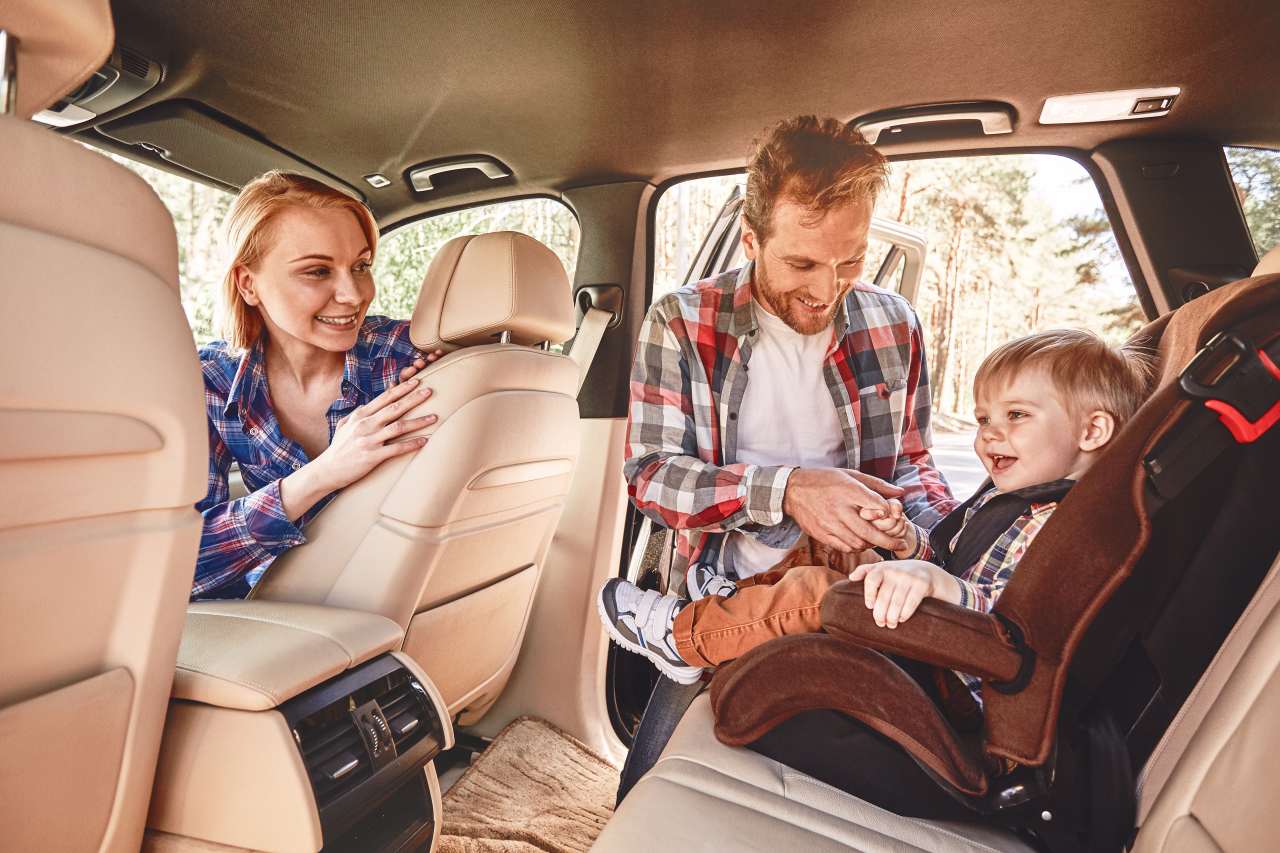
.jpg)


















.jpg)
.jpg)
.jpg)
.jpg)
.jpg)
.jpg)
.jpg)
.jpg)
.jpg)
.jpg)
.jpg)
.jpg)
.jpg)
.jpg)
.jpg)
.jpg)
.jpg)
.jpg)
.jpg)
.jpg)
.jpg)
.jpg)

.jpg)


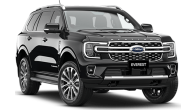


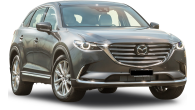










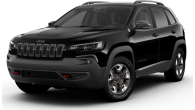









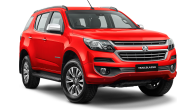


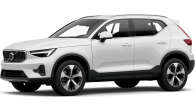



.png)

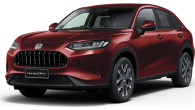
.jpg)
.jpg)

.jpg)
.jpg)
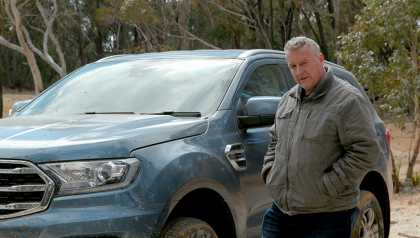
.jpg)
.jpg)

.jpg)

.jpg)
Comments